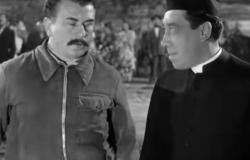With temperatures rising, days getting longer and flowers blooming on the branches, spring is the ideal season for exploring new destinations. If you like to wander with your gaze among soft hills covered with olive trees and dotted with the vivid colors of the flowers, with a bell tower rising on each peak to signal the presence of a small village waiting to be explored, southern Tuscany could be the right place for you.
In the area of Mount Amiata, a mountainous group of volcanic origin that rises inland, you can find many small villages immersed in a truly timeless atmosphere, forgotten by mainstream tourism circuits and as if asleep in a sleepy limbo. The visitor can enter on tiptoe, from a privileged point of view, without filters.
Mount Amiata, whose peak reaches 1738 metres, dominates a large area of territory between the Val d’Orcia, the Val di Paglia and the innermost part of the Grosseto Maremma. This last area, dotted with small villages, hides fabulous natural panoramas, due to its conformation and the hand of man that has elegantly shaped the territory. Stories and art embrace each other in the heart of towns that are now sparsely populated, but whose legacy is evident when walking through their centuries-old alleys.
Castel del Piano, immutable beauty
The area of Mount Amiata, an ancient volcano that has been extinct for more than two hundred thousand years, is not very densely inhabited, mostly made up of small towns located along the valleys of the mountain. One of the main centres, a point of reference for all services for both the inhabitants of the valleys and tourists, is Castel del Piano.
Enea Silvio Piccolomini, later Pope Pius II, wrote in the second half of the fifteenth century: “To the west the Amiata slopes down to the Maremma and overlooks Casteldelpiano (which is a town located at the roots of the mountain) and which due to the beauty of the place, the convenience of the position and the amenity of the town, it is undoubtedly the first among those located on that side. It is irrigated by very clear sources and, up to half a turn of the walls, surrounded by a river of perennial water. That name was given to it because it is located on a fertile plain that extends for about a mile, green with trees and full of meadows and worked fields.”
Words that are still authentic today, testifying to theimmutable beauty which can be admired from this town.
It is not only the beauty of the surrounding area, however, that characterizes Castel del Piano: the historic center enclosed within the walls is, in fact, dotted with noble palaces and religious buildings that emerge from the intricate network of alleys north of Corso Nasini, the main street of the center which is full of wine bars, restaurants and other commercial establishments.
Montegiovi, a terrace on the Amiata
A short distance from Castel del Piano, and in fact under the municipal jurisdiction of the latter municipality, is Montegiovi, a very small village perched on the top of a hill overlooking the surrounding rolling hills.
The view is the main reason to go to Montegiovi. The street ends in Piazza della Vittoria, a large balcony with a spectacular view on the slopes of Amiata. The village is very small, but you can recognize the ancient walls and the fourteenth-century church of San Martino, which dominates the central part of the town.
Scrolling the panorama in the direction of Monte Amiata you can guess the contours of the courses of the Ente and Vivo rivers, two of the numerous waterways that flow from the slopes of the ancient volcano. At the confluence between them, they create a spectacular succession of natural pools, sheltered by the shade of the woods, a destination for local young people during the hot summers of southern Tuscany
Rocchette di Fazio, vestiges of a noble past
Hamlet of the municipality of Semproniano, Rocchette di Fazio it is a typical and scenic medieval village, perched on a limestone cliff, at the gates of the Bosco dei Rocconi nature reserve, on top of which stand the ruins of the imposing Aldobrandesca fortress once a symbol of the town.
In medieval times, a center of military and strategic importance, Rocchette di Fazio has lost more and more importance over time and today it is a substantially uninhabited location, but well-kept by those who own apartments used for tourist purposes or as a second home.
The town winds along a few cobbled alleys, in the main square there is a restaurant with intermittent opening hours and silence envelops the stones of the Rocca and the Parish Church of Santa Cristina, the two monumental buildings of the village.
All around, dense woods wind in a precipitous descent towards the Albegna valley below, the third longest river in Tuscany. A path connects the town to the so-called Strette dell’Albegna, a canyon dug by the river in a stretch where large walls of very white rock surround it. A magical natural place and ideal for a picnic.
Santa Fiora, the tourist center of Amiata
One of The most beautiful villages in Italy, Santa Fiora It has a good reputation and is located south-west of Monte Amiata, halfway between Castel del Piano and Roccalbegna. It has a delightful historic center with a clear medieval feel, made up of alleys and paved streets, arches and doors that move the urban panorama and a composition on several levels, namely the districts of Castello, Borgo and Montecatino.
The Castle district is the one that coincides with the historic center, where you can visit the Parish Church of Saints Flora and Lucilla decorated with the works of Della Robbiathe Sforza palace and its Mercury Mining Museum, a legacy of a crucial past for the region: in the nearby Abbadia San Salvatore, between the early twentieth century and the Seventies, one of the largest mercury mines in the world was opened world.
Getting lost walking in the ancient streets of the village is one of the most attractive activities in the main district. The Borgo district is located south of the center, slightly lower than the top of the hill on which the town stands. The Jewish ghetto of Santa Fiora was located here from the 16th to the 18th century. The Ghetto square is one of the few in the city with a single entrance from which you enter and exit, adorned by the Church of Santa Chiara.
Finally, even further down here is the Montecatino district with the large 16th century Peschiera, built around the sources of the Fiora river to collect and convey its waters. The adjacent Church of the Madonna della Neve has a glass floor that allows you to see the waters of the river flow right under your feet.
Roccalbegna, straight out of a fairy tale
Driving along the state road 323 of Mount Amiata in a southerly direction it is not immediately easy to realize the extraordinary nature of the place towards which you are heading, Roccalbegna. It will only be once you have crossed and left the town that, looking back, you will be left speechless, observing the fortress that stands on the top of the cliff that dominates, or rather looms over, the town: a medieval village that not even the best author could have imagined.
In addition to a panoramic walk to admire the view from the Aldobrandesca fortress which dominates the town from the top of the cliff, Roccalbegna is worth a walk to admire the Church of Saints Peter and Paul, in the central square overlooked by the Civic Tower with its clock. Inside the Church there is a prestigious altarpiece, which depicts a Madonna with child, attributed to Ambrogio Lorenzetti (ca. 1340).




